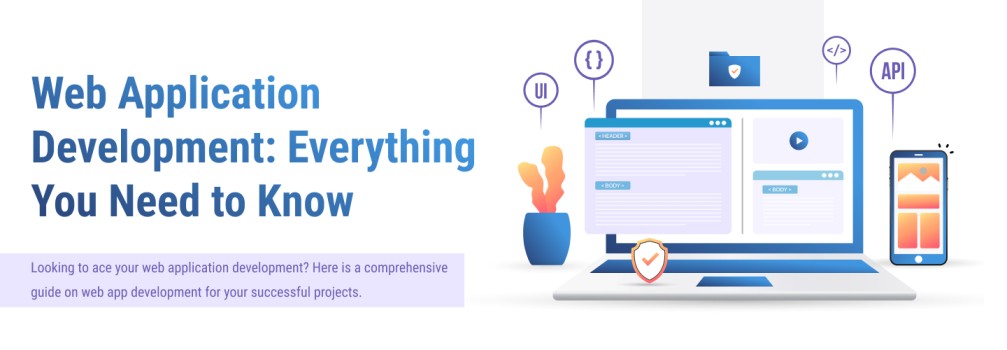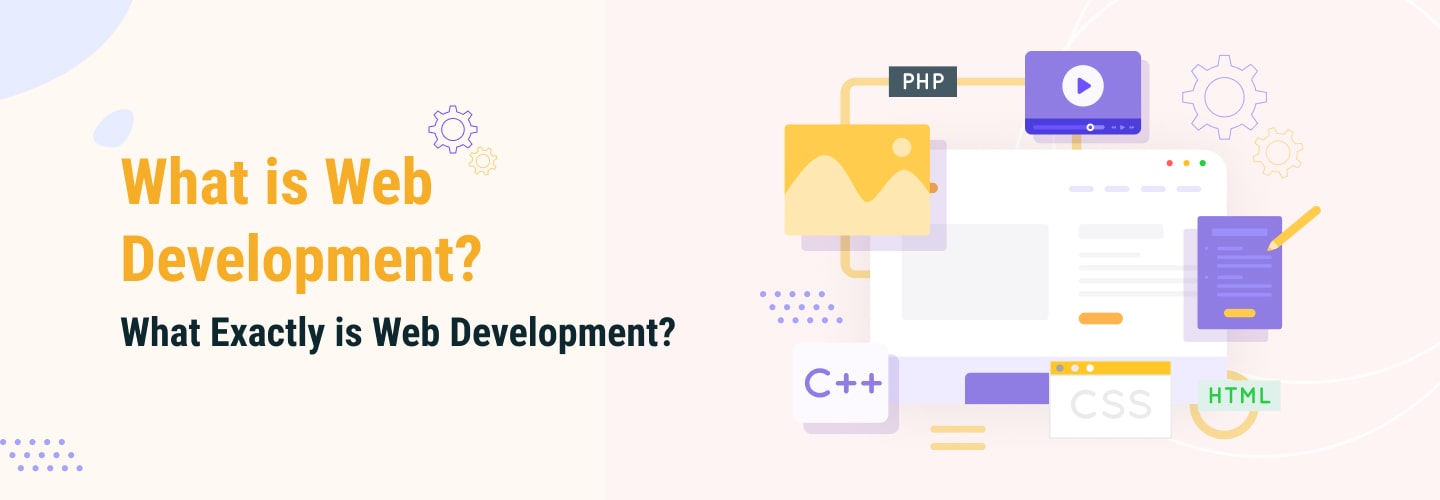Table of Contents
New to SaaS ? Welcome!
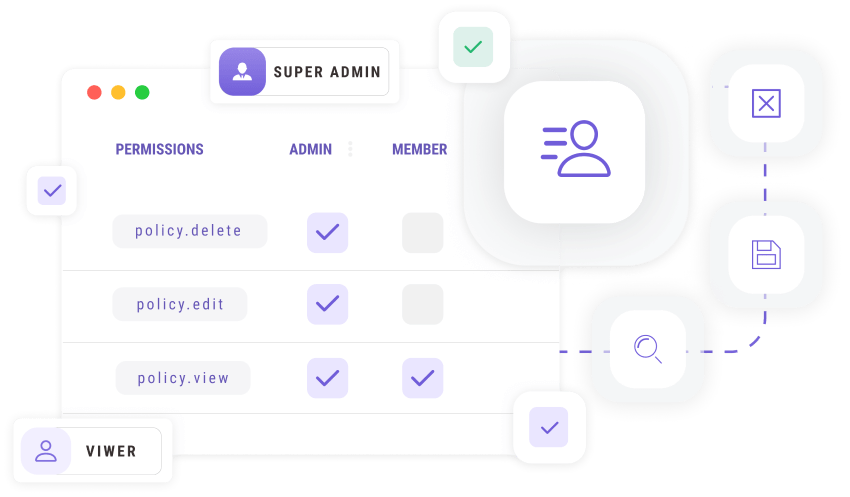
In today’s digital age, businesses are constantly looking for ways to stay ahead of the curve and get an edge on their competition. One way to do this is using the business model Software as a Service (SaaS).
Moreover, Software as a service applications are becoming increasingly popular in recent years. They offer many benefits over traditional software, including —but not limited to — being easier to use because they may require less setup time and can provide greater customization options depending upon your needs. They also increase security when dealing directly with one system provider.
If you’re thinking about building your own SaaS app but aren’t sure where to start
this article will explain what Software as a service is and its benefits for companies and clients. Using the latest trends, we’ll define the five steps to take your business to the next level.
What is Software as a Service ( SaaS )?
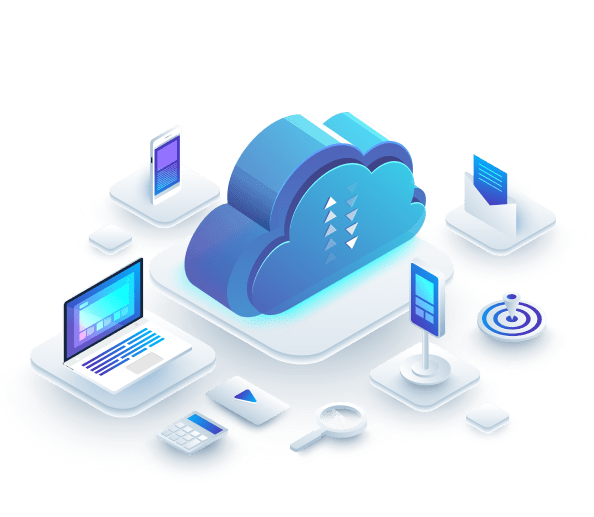
Software as a service, widely known as SaaS, is defined as a method of delivering applications over the internet.
The ‘as a service’ aspect of SaaS means that companies do not have to worry about installing, renewing, or maintaining software on-premises. Instead, they can simply access whatever service they need and pay for only what they use.
What is Software as a Service (SaaS)?
Software as a service is a cloud computing service that lets users access cloud-based software from a vendor.
It is an exciting alternative to the traditional way of installing software in a business environment. Moreover, there’s no need to build the server, install the application, and set it up. Instead, the apps live on a remote cloud network that can be accessed via web or an API.
In addition, the company provides software that typically sells on a subscription basis, with the customer having access to the software for a certain amount of time and paying for it.
SaaS companies host the software and help users with it. This way, they have more control over their SaaS products than traditional companies.
Especially, Each customer’s account is protected, and they know that no one will access their personal information, even though they are all part of the same platform.
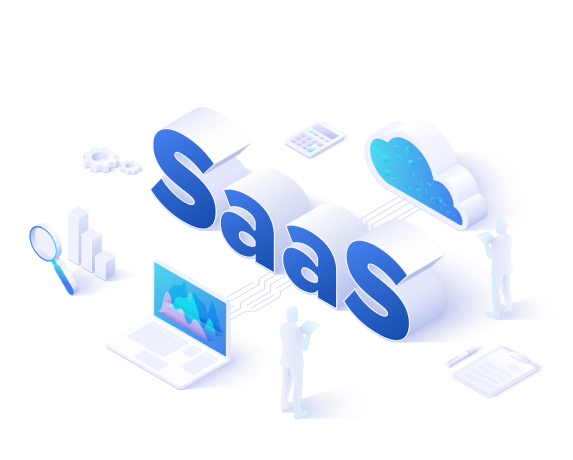
Types of SaaS Apps
The SaaS market is rapidly expanding, and today, there are several different types of SaaS solutions available.
The main difference between these types is the industry or vertical that the SaaS product caters to, such as communication, finance, or customer relationship management.
As the market continues to expand and the adoption of SaaS solutions increases, new types of SaaS products are bound to appear. Currently, cloud-based software solutions are being adopted to replace numerous human tasks, leading to the development of the term ‘anything as a service (XaaS).
With remote work becoming the norm, the popularity of SaaS solutions has skyrocketed. This is especially true because these services can be used from anywhere in the world without the need for purchasing and setting up specialized infrastructure.
Fintech Apps
ERP Platforms
Marketing Software
Collaboration Tools
Vertical SaaS Segment
Gamification Apps
Types of SaaS
Content management solutions allow businesses to publish and edit various types of content such as articles, blogs, and press releases with ease and efficiency. SaaS-based CMS solutions help organizations bolster their online presence through well-written and augmented content. Leading CMS software solutions allow users to work with text, pictures, and videos and even provide templates for easy content publishing. A few prominent CMS solutions include WordPress, Drupal, and Magnolia.
SaaS-based HRM solutions allow companies to manage human resources with minimal effort and cost. SaaS HRM comes with a host of features that help streamline recruiting, scheduling of interviews, tracking and analysis of performance, monitoring of productivity, attendance, and employee appraisals. These solutions help organizations store, access, and process all candidate and employee information in one place.
Cutting-edge HRM solutions provide templates for employee reviews, provide a robust feedback loop at all levels, and ensure effective cooperation, communication, and collaboration within the enterprise. HRM allows managers to set goals and share achievements as well as constructive feedback. Some solutions can even be integrated with communication platforms for on-the-go operations. Last but not least, SaaS HRM solutions provide analytics based on age, gender, skill set, and many other metrics.
Leading SaaS-based HRM solutions include Lattice, SAP SuccessFactors, and BambooHR.
Communication is one of the most prominent applications of SaaS. Since COVID-19 made work-from-home arrangements commonplace, collaboration has become a key challenge for organizations. However, SaaS-based communication tools can be deployed easily and instantaneously. This allows organizations to adopt them even though all employees are operating remotely.
The main advantage of these platforms is cross-platform working, instant messaging, and file sharing from any device with an internet connection. Leading SaaS-based communication solutions include Slack, Skype for Business, and Brosix.
Especially post-pandemic, ecommerce is the shopping medium of choice for a majority of the digitalized world. As new businesses come into existence, they must create a robust online presence to ensure easy access to a larger customer base. Retail and ecommerce SaaS solutions allow businesses to start selling their products and services instantaneously. This helps new and upcoming entrepreneurs save money on their online presence, such as website development, user experience, and UI design.
Cutting-edge SaaS-based retail and ecommerce solutions also enable entrepreneurs to customize every aspect of their online storefronts. This includes appearance, theme, and color combination; payment platform integrations; discounts and promotions; and even blogs and other marketing collaterals. With these solutions, users can also create financial reports, monitor customer behavior, and ensure seamless regulatory compliance.
Popular SaaS-based ecommerce platforms include Shopify, BigCommerce, and Magento.
SaaS has revolutionized the bookkeeping and accountancy software space. Accountancy SaaS solutions simplify the management of financial operations and costs through automation. These solutions are especially useful for larger organizations that process thousands of accounting transactions regularly.
SaaS-based accounting software comes with a variety of customizable features based on the needs of end users. At its core, this type of SaaS solution is useful for generating bills and invoices, reporting on spending, scheduling, and prioritizing financial tasks, disbursing remuneration, and ensuring compliance. Leading accountancy SaaS solutions include QuickBooks and Xero
Project management SaaS solutions are popular for enhancing cooperation by tracking efforts and progress. Especially in 2021, where collaboration has become nearly completely remote, these solutions are gaining immense popularity. One reason for this is that these solutions are much easier, faster, and more effective when compared to contemporary project management tools such as emails and spreadsheets.
Leading SaaS-based project management solutions come with various functions and tools, including task tracking, adjustable page permissions, real-time notifications, and even blog posting. The most popular project management SaaS solutions include Jira, Confluence by Atlassian, and Workzone.
Companies use enterprise resource planning solutions to manage numerous business processes, including compliance, risk management, accounting, and budgeting. With ERP, enterprises can combine and track all included processes through a single interface and generate useful, comprehensive reports as required.
NetSuite is a popular ERP SaaS that caters to over 22,000 client companies globally. It includes many useful retail and ecommerce solutions. Its useful ‘Professional Services Automation’ function allows for efficient planning and execution of projects. Other leading SaaS ERP solutions include Microsoft Dynamics ERP, Oracle JD Edwards, and SAP Business ByDesign.
Money is the lifeblood of any organization and managing payments and billing efficiently and transparently is of utmost importance. SaaS-based payment and billing services have been witnessing high demand in recent times. This is because they allow organizations of all sizes to accept payments quickly and easily.
With these solutions, handling hundreds, thousands, or even millions of transactions every day is no longer a difficult task. SaaS-based payment and billing solutions store all sensitive customer data, such as card details, securely and without any risk of data leakage.
Besides this, leading billing solutions come with a payment reporting feature, enabling businesses to flag suspicious transactions instantly. Popular SaaS-based payment and billing solutions include PayPal, Stripe, and WePay.
Today, no business can survive without understanding the value of customer data. This valuable data is leveraged to understand the psyche of customers to promote products, increase sales, and optimize marketing efforts. Customer relationship management solutions enable effective management techniques, store customer data efficiently and safely, and help bolster customer relationships.
CRM solutions help users forecast market trends (e.g., sales). Apart from this, these solutions automate repetitive operations, including sending emails, collecting feedback, and providing rudimentary customer services for common issues. Today, SaaS CRMs are loaded with many advanced functions. Other leading CRM vendors include Bitrix24, Salesforce, and Zoho CRM.
SaaS Characteristics
The good way to understand the software as a service model is by thinking of a bank, which protects the privacy of each customer while providing service that is reliable and secure—on a massive scale. A bank’s customers all use the same financial systems and technology without worrying about anyone accessing their personal information without authorization.
A “bank” meets the key characteristics of the SaaS model:
Multitenant Architecture
A multitenant architecture, in which all users and applications share a single, common infrastructure and code base that is centrally maintained. Because SaaS vendor clients are all on the same infrastructure and code base, vendors can innovate more quickly and save the valuable development time previously spent on maintaining numerous versions of outdated code.
Easy Customization
The ability for each user to easily customize applications to fit their business processes without affecting the common infrastructure. Because of the way SaaS is architected, these customizations are unique to each company or user and are always preserved through upgrades. That means SaaS providers can make upgrades more often, with less customer risk and much lower adoption cost.
Better Access
Improved access to data from any networked device while making it easier to manage privileges, monitor data use, and ensure everyone sees the same information at the same time.
SaaS Harnesses Web
Anyone familiar with Amazon.com or My Yahoo! will be familiar with the Web interface of typical SaaS applications. With the SaaS model, you can customize with point-and-click ease, making the weeks or months it takes to update traditional business software seem hopelessly old fashioned.
Increased efficiency and cost effectiveness are the reasons many businesses give for turning to cloud-based SaaS solutions. The advantages include:
Low setup and infrastructure costs
You just pay for what you need with no capital expenditure that needs to be depreciated on your balance sheet over time.
Accessible from anywhere
Just connect to the internet and you can work from wherever you need to be via desktop, laptop, tablet or mobile or another networked device.
Scalability
You can adapt your requirements to the number of people who need to use the system, the volume of data and the functionality required as your business grows.
SLAS for uptime and performance
So, you have assurances that the software will be available to use when you need it – a difficult promise for in-house teams to make.
Automatic, frequent updates
Providers offer timely improvements thanks to their scale and because they receive feedback about what their customers need. This frees up your IT department for other more business-critical tasks.
Security at the highest level required by any customer
Because of the shared nature of the service, all users benefit from the security level that’s been set up for those with the highest need.
Customization
SaaS applications are often customizable and can be integrated with other business applications, especially across applications from a common software provider.
SaaS Challenges and Risks
Software as a service also poses some potential risks and challenges, as businesses must rely on outside vendors to provide the software, keep that software up and running, track and report accurate billing and facilitate a secure environment for the business’s data.
Multitenant Architecture
Issues can arise when providers experience service disruptions, impose unwanted changes to service offerings or experience a security breach — all of which can have a profound effect on the customers’ ability to use the SaaS offering. To proactively mitigate these issues, customers should understand their SaaS provider’s SLA and make sure it is enforced.
Difficulty switching vendors
As with using any cloud service provider, switching vendors can be difficult. To switch vendors, customers must migrate very large amounts of data. Furthermore, some vendors use proprietary technologies and data types, which can further complicate customer data transfer between different cloud providers. Vendor lock-in is when a customer cannot easily transition between service providers due to these conditions.
Customers lose control
If the provider adopts a new version of an application, it will roll out to all of its customers, regardless of whether or not the customer wants the newer version. This may require the organization to provide extra time and resources for training.
Security
Cloud security is often cited as a significant challenge for SaaS applications.
How does software as a service work?
SaaS works through the cloud delivery model. Actually, a software provider will either host the application and related data using its own servers, databases, networking and computing resources, or it may be an ISV that contracts a cloud provider to host the application in the provider’s data center. Moreover, the application will be accessible to any device with a network connection. SaaS applications are typically accessed via web browsers.
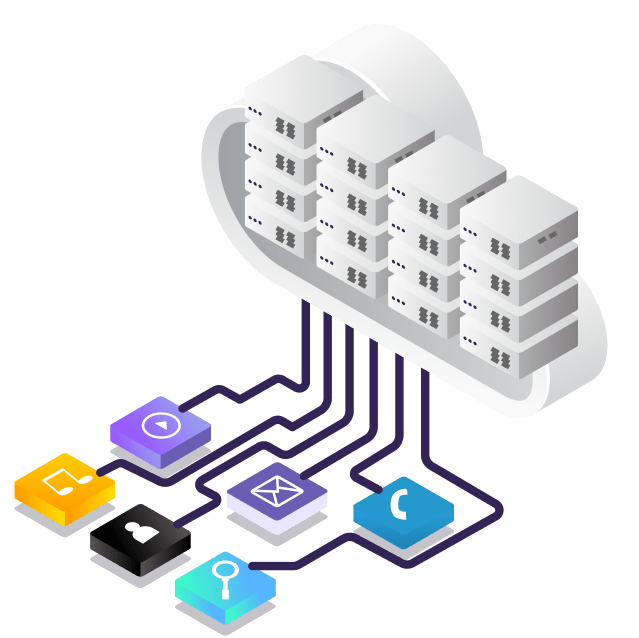
As a result, companies using SaaS applications are not tasked with the setup and maintenance of the software. Firstly, users simply pay a subscription fee to gain access to the software, which is a ready-made solution.
SaaS is closely related to the application service provider (ASP) and on-demand computing software delivery models where the provider hosts the customer’s software and delivers it to approved end users over the internet.
In the software-on-demand SaaS model, the provider gives customers network-based access to a single copy of an application that the provider created specifically for SaaS distribution.
The application’s source code is the same for all customers, and when new features or functionalities are released, they are rolled out to all customers. Depending on the service-level agreement (SLA), the customer’s data for each model may be stored locally, in the cloud or both locally and in the cloud.
Organizations can integrate SaaS applications with other software using application programming interfaces (APIs). For example, a business can write its own software tools and use the SaaS provider’s APIs to integrate those tools with the SaaS offering.
SaaS architecture
SaaS applications and services typically use a multi-tenant approach, which means a single instance of the SaaS application will be running on the host servers, and that single instance will serve each subscribing customer or cloud tenant.
Actually, the application will run on a single version and configuration across all customers, or tenants. Though different subscribing customers will run on the same cloud instance with a common infrastructure and platform, the data from different customers will still be segregated.
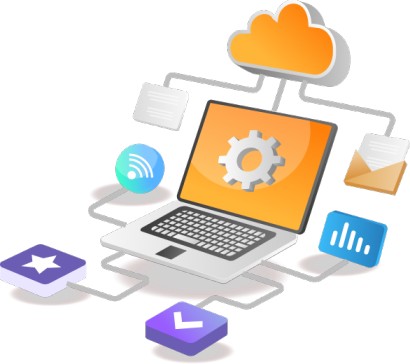
The typical multi-tenant architecture of SaaS applications means the cloud service provider can manage maintenance, updates, and bug fixes faster, easier, and more efficiently. Rather than having to implement changes in multiple instances, engineers can make necessary changes for all customers by maintaining the one, shared instance.
Furthermore, multi-tenancy allows a greater pool of resources to be available to a larger group of people, without compromising important cloud functions such as security, speed, and privacy.
SaaS vs. IaaS vs. PaaS
SaaS is one of the three major cloud service models, along with IaaS and PaaS. All three models involve cloud providers that deliver their own hosted data center resources to customers over the internet.
Where the models differ is in the completeness of the product. SaaS products are complete and fully managed applications. IaaS is largely outsourcing data center resources, and PaaS delivers a development platform and other tools hosted by the provider’s data center.
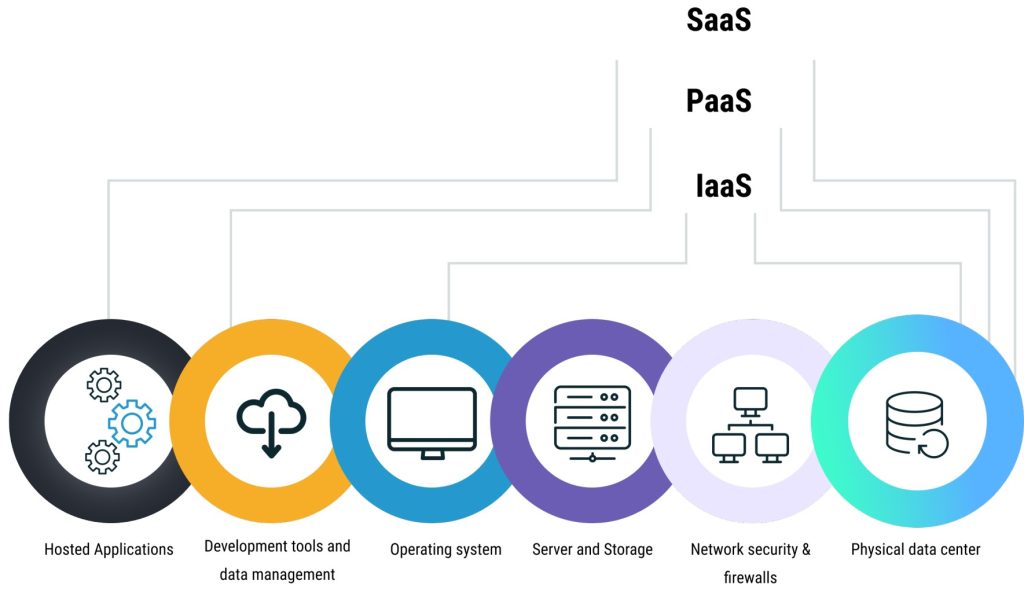
SaaS – Software as a Service
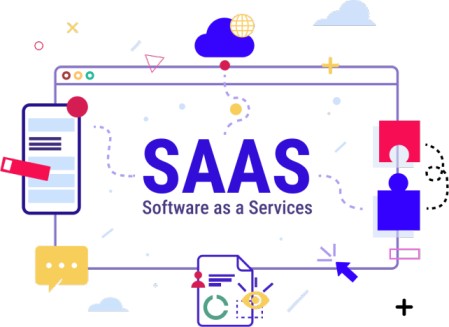
Application users do not have to download software, manage any existing IT infrastructures or deal with any aspect of the software management. Moreover, Vendors handle maintenance, upgrades, support, security, and all other aspects of managing the software.
IaaS – Infrastructure as a Service
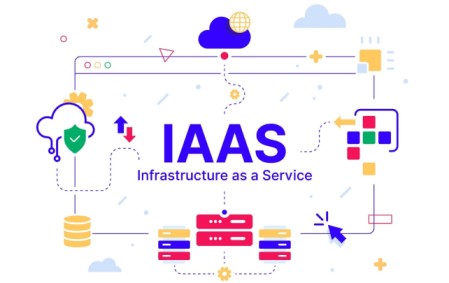
Is used by companies that want to outsource their data center and computer resources to a cloud provider. IaaS providers host infrastructure components such as servers, storage, networking hardware and virtualization resources. Customer organizations using IaaS services must still manage their data use, applications, and operating systems (OSes).

PaaS – Platform as a Service
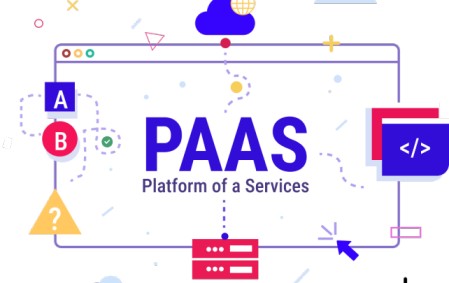
Provides a framework of resources for an organization’s in-house developers. This hosted platform enables developers to create customized applications. Moreover, The vendor manages the data center resources that support the tools. Additionally, customer organizations using PaaS services do not have to manage their OSes but must manage applications and data use.
SaaS Security and Privacy
Best Practices
- Vulnerability Monitoring
- Data Encryption
- VPN & TLS
- MFA & OWASP
- Risk Assesment
- CASB & SSPM
Our Challenge
- IAM
- Virtualization
- Obscurity
- Misconfiguration
- Regulatory Comoliance
- Disaster Recovery
Our Principles
- Access Management
- VM Managment
- Network Control
- Perimeter Network Control
- Data Protection
- Reliability
The cybersecurity risks associated with software as a service are different from those associated with traditional software. With traditional software, the software vendor is responsible for eliminating code-based vulnerabilities, while the user is responsible for running the software on a secure infrastructure and network. As a result, security is more the responsibility of the independent software vendor and third-party cloud provider.
Moreover, Despite the rapid adoption of cloud-based models for fully serviced software products, organizations still have certain reservations about SaaS products when it comes to security and privacy.
These concerns include:
• Encryption and key management
• Identity and access management (IAM)
• Security monitoring
• Incident response
• Poor integration into broader, company-specific security environments
• Fulfillment of data residency requirements
• Data privacy
• Cost of investing in third-party tools to offset the SaaS security risk; and
• Lack of communication with technical and security experts during the sales process.
SaaS Pricing
Generally, using a SaaS product is more cost-effective than a traditional software license for enterprise software, as setup and installation onto hardware are not necessary. Moreover, SaaS providers typically use one of many subscription-based pricing models for customers.
A service may be free for users, with the SaaS provider generating revenue through selling advertisement space. In this model, there is typically an option to upgrade to a paid tier that doesn't include intrusive ads.
Customers are granted access to the software's full suite of features for a fixed monthly or annual subscription fee.
Pricing is determined by how many people will be using the service for each subscription. There is a fixed price for every user
The more customers use the service, the more they are billed and vice versa.
Customers may have free access to a service but will be required to pay for storage if they wish to continue using the product after they pass the free limit.
Price tiers are determined by the amount of features the subscriber seeks. In this model, reduced versions of the software with limited features are available for a lower price than the maximum functionality tier.
This incorporates aspects of the "per-user" and "pay-as-you- go" strategies. Subscribers are billed per user, but only if the user has been actively using the service beyond a defined threshold.
The service will be generally free to use with an entry-level tier. However, there will typically be functional restrictions in place that are designed to upsell customers to a paid tier.
SaaS Trends
Organizations are now developing SaaS integration platforms (or SIPs) for building additional SaaS applications. The consulting firm Saugatuck Technology calls this the “third wave” in software adoption: when SaaS moves beyond standalone software functionality to become a platform for mission-critical applications.
SaaS is one of several cloud computing solutions for business IT issues. Other ‘as-a-Service’ options include:
- Infrastructure as a Service (IaaS) – the provider hosts hardware, software, storage, and other infrastructure component
- Platform as a Service (PaaS)
- Everything as a service (XaaS) – which is essentially all the "aaS" tools neatly packaged together.
Top 10 SaaS Trends
It is safe to say that this is the year for SaaS. Remote working has become a mainstay for thousands of companies all across the globe. As work requirements evolve, the need for new software on end-user systems keeps emerging. Moreover, with SaaS, fulfilling such requirements becomes easy—remotely, at low cost, and without the need for additional deployment procedures or human resource expertise.
Mobile Optimization
SaaS on mobile is a trend that is expected to be a part of the natural progression in today’s remote work environment. Company executives across verticals are increasingly executing important business operations from their smartphones and tablets. Therefore, dynamic smartphone dashboards and related tools are the need of the hour. Expected outcomes of this trend include:
- Personalized SaaS smartphone applications
- AI- and ML-augmented SaaS mobile apps
- Ultra-responsive mobile functionality, including one-swipe actions, task optimization, and intuitive filters
- Increased accessibility for differently abled end users
- Immersive SaaS experiences through augmented and virtual reality
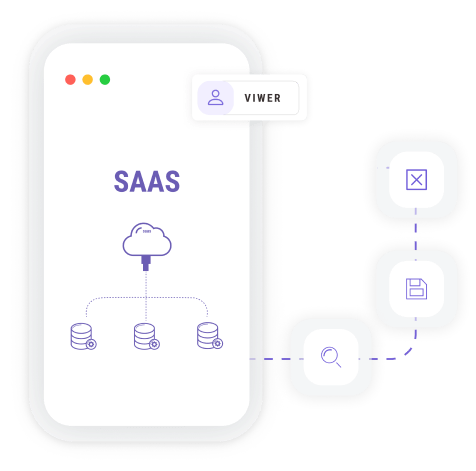
Artificial intelligence (AI)
Artificial intelligence is the future of technology. On the SaaS front, AI is bolstering personalization, ease of use, and cybersecurity. In 2022, the popularity of voice-controlled technology has surged. AI-based technologies such as natural language processing (NLP) understand and adapt to human speech patterns. This can lead to useful features such as voice control, which are especially beneficial for customers using SaaS applications.

SaaS solutions that are augmented with AI boast faster and easy-to-use internal processes. Businesses can leverage such SaaS products to answer questions more quickly, generate forecasts faster, and enhance overall responsiveness.
On the cybersecurity front, AI-enabled automation and pattern recognition can be combined to identify and thwart potential threats quickly. With AI, SaaS will be much more secure than ever before.
Machine learning
SaaS vendors leverage machine learning to automate processes, enhance responsiveness, and enable the creation of detailed reports. ML-augmented SaaS applications allow for the creation of useful services such as smart chatbots, automatic onboarding, and autonomous operations. With ML, SaaS-based offerings become self-improving. These solutions can then facilitate clients with a level of intelligence and efficiency that can revolutionize operations.

Application Programming Interface (API) Connectivity
Application programming interfaces are a fundamental aspect of software development. With the explosive increase of SaaS adoption within nearly every market space, many organizations felt the need to integrate SaaS into contemporary business systems. API connectivity is especially useful for organizations that cannot or do not want to migrate their data to the cloud.

Today, not all SaaS vendors provide end-to-end API integration. Instead, this gap in supply and demand is being fulfilled by third-party vendors. However, as SaaS providers see an increasing demand for API connectivity, more of them could provide in-house integration rather than redirecting clients to third parties. This will also help reduce go-to-market time and facilitate vendors to develop more robust SaaS capabilities than third parties.
Vertical SaaS
While horizontal SaaS caters to clients across industries and verticals, vertical SaaS brings customizability to clients within specific supply chains and sectors. Examples of upcoming vertical SaaS trends include retail analytics, healthcare analytics, and modern logistics analytics. Companies leverage vertical SaaS to specialize in their domain and enhance cost-effectiveness.
With vertical SaaS, companies enjoy higher levels of flexibility, more frequent upselling opportunities, and minimal customer acquisition costs. Vertical SaaS also enhances customer intelligence by enabling enterprises to gain industry-specific client data and intelligence to obtain client-focused insights.
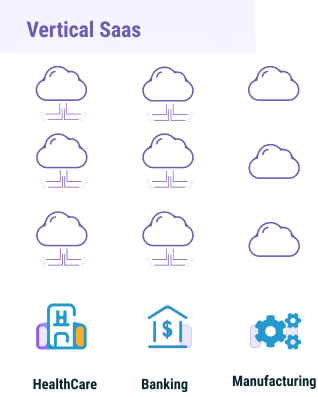
Finally, vertical SaaS can be integrated with predefined KPIs, metrics, and analytics. Companies can utilize this feature to evaluate and address both short-term and long-term performances and processes.
Data analytics
SaaS solutions are data-driven. As digital dissemination becomes the norm across industries, SaaS vendors across sectors are leveraging data analytics to streamline their services. Robust data analytics also helps both SaaS vendors and client companies to gain deep insights into user behavior.

Integrated analytics allows SaaS users to treat data as a single point of truth, uncover hidden insights through tools such as performance dashboards, and access vital business information. Cutting-edge data models will be accessible on the go and from any device that has an internet connection.
Micro-SaaS
Many new players, both established companies and startups, are expected to enter the SaaS market. This could lead to saturation and intense competition. As such, SaaS vendors will have to develop new ways of offering value, innovating, and attracting customers. Micro-SaaS innovations can help vendors achieve this.

Micro-SaaS teams are typically small. These teams build products that are normally complementary add-ons to an existing SaaS platform. Micro-SaaS aims to improve an existing SaaS product or add a missing but useful feature.
Low-code and no-code SaaS
As the popularity of SaaS skyrockets, expert developers will no longer be needed to craft customized SaaS solutions from scratch. Instead, no-code and low-code SaaS platforms are expected to help personnel with less technical experience create a SaaS platform that suits the enterprise’s needs.
Out-of-the-box or turnkey-style SaaS will still require expert personnel to maintain and manage. However, these software developers and engineers will have more time to focus on driving innovation and giving the organization a competitive edge instead of directing their efforts toward routine SaaS setting up. Low-code and no-code SaaS can boost productivity and introduce even technologically conservative organizations to SaaS swiftly and effectively.
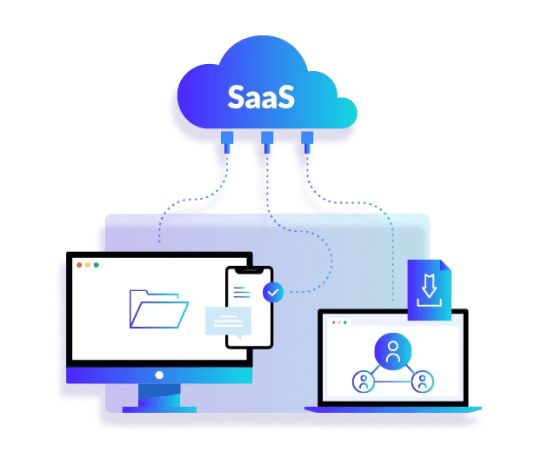
White labeling
In white labeling, a vendor creates a SaaS platform that is completely developed, undergoes rigorous testing, and is ready for use. This platform is then sold to another party. The buyer can then customize and resell this ‘white labeled’ SaaS solution under its own brand.
White-labeled SaaS solutions can be either end-to-end or a part of embedded business intelligence products. In the latter, an enterprise can integrate the white-labeled SaaS solution within its own application.

White labeling could be valuable for smaller companies that want to gain a larger market share swiftly. White-labeled SaaS removes the need for financial and logistical considerations and allows startups to focus on their core strategy, value proposition, and branding.
PaaS migration
As SaaS continues to evolve, developers and vendors are shifting their focus toward innovation to enhance customer acquisition and retention. Some experts believe this could be achieved by SaaS vendors adopting a platform as a service (PaaS) model. This could enable providers to create customized applications as add-ons for their original offerings. For instance, both Salesforce and Box provide PaaS-centric services.
Migrating to a PaaS model can bolster SaaS agility through enhanced functionality, features, and customizability. Scalability is another advantage of PaaS, as vendors will see a boost in the flexibility, robustness, and accessibility of their SaaS solutions. Finally, all aspects of PaaS are under the umbrella of a single vendor. This makes regular, automatic, and all-encompassing updates easy to disseminate and enhances the vendor’s security posture.
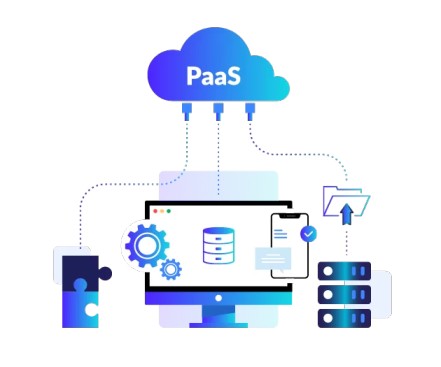
SaaS vs Packaged Software

Saas Software
Traditional Software
Subscription
Users subscribe to the software paying
a small monthly fee
One-time Fee
Users purchase software once for a full price
Work on the get-go
Software doesn’t require installation,work starts immediately
after subscription
Needs to be installed
Software requires time for installation before users can start working
Multiple device support
cloud software is accessible by subscription on multiple devices,
backups and shares work progress between each connected device
Single device only
Users need to buy additional licence for every
device they want to use the software on
Support and high customization
Saas development never stops, updates are included in subscription fee,
developers take customized requests on missing features
Little to no support
Development stops after release, users have to buy new
versions, poor support
The future of SaaS
Cloud computing and SaaS have come a long way in a short time. Increased awareness and uptake have accelerated the growth of SaaS products and led to the rise of SaaS Integration Platforms (SIPs) such as Infrastructure as a Service (IaaS) and Platform as a Service (PaaS). Companies will continue to outsource non-core IT activities to specialist service providers who can do it better. The cloud approach can help companies develop end-to-end integrated solutions and allow them to concentrate on what they do best, leaving a wide range of hardware and software IT issues to service providers.
With companies adopting various “aaS” services, long-term relationships with service providers will grow – which in turn will lead to innovation as customers’ growing needs are understood and provided for.
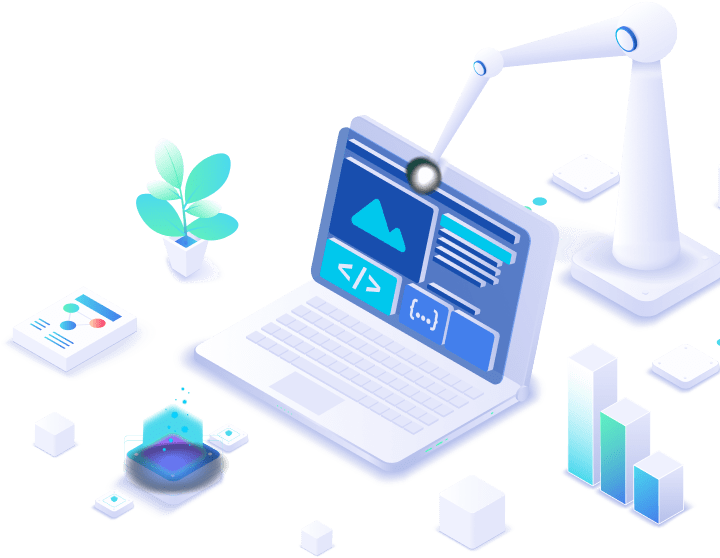
In the future, high-performance computing will help with a wide range of business uses, such as analyzing large volumes of customer data and monitoring application logs. SaaS may be one day be able to help address critical challenges for business such as predicting which customers will churn or which cross-selling practices work best for your business.
With the need for high-volume data, software performance and backup increasingly daily, it’s easy to see why so many businesses are choosing to outsource to cloud-based providers. If you’re considering a move to a SaaS platform, find out what Salesforce has to offer for businesses of all sizes.
Conclusion
As the cloud continues to see a rapid increase in popularity across industries, more and more organizations are finding it faster, easier, safer, and more economical to adopt software as a service (SaaS) solution as a part of their daily operations. Developers and other professionals have also taken a preference to cloud applications in comparison to on-premise solutions. In 2021, almost all core enterprise functions from enterprise resource planning to personnel management are offered by SaaS providers. This makes it a viable choice for management teams across verticals.

